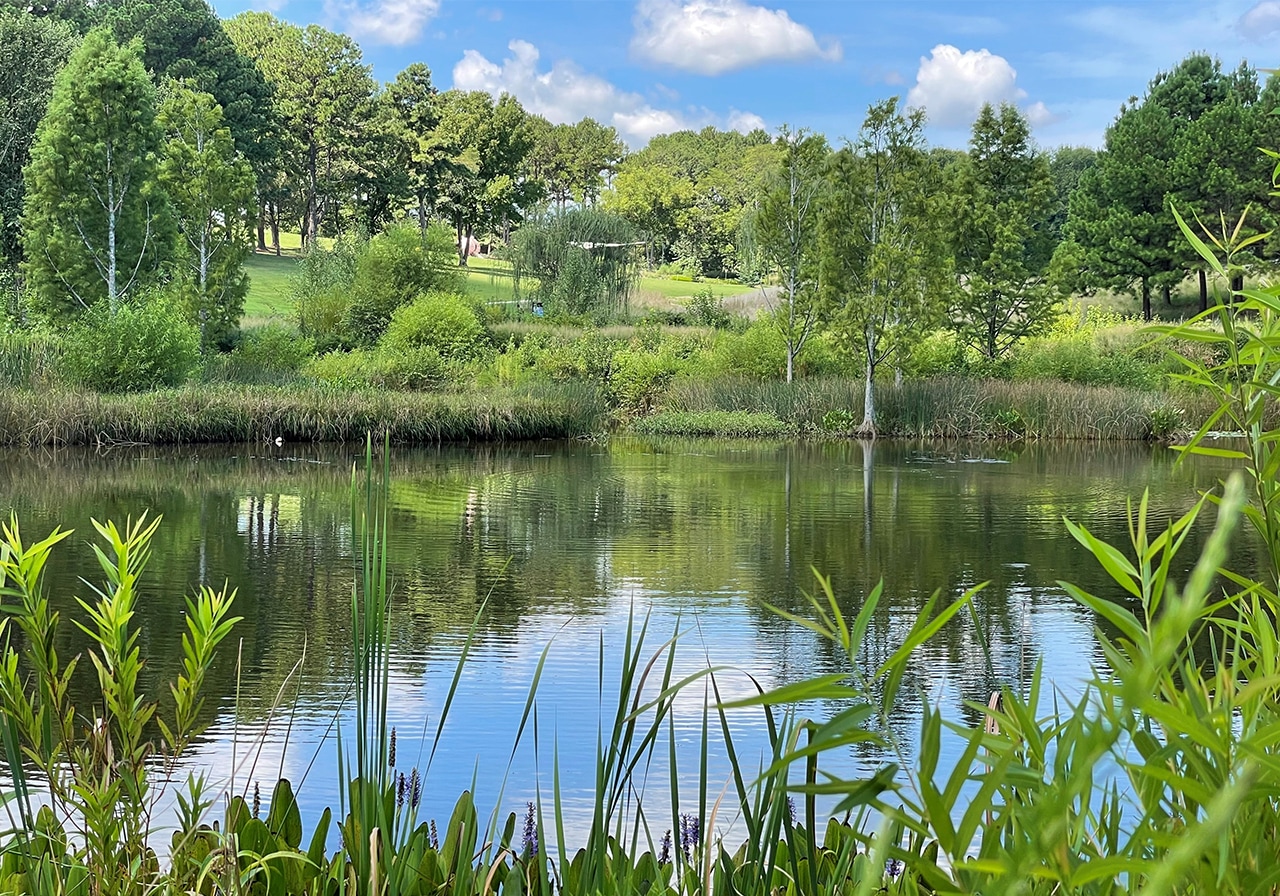Sustainability Practices for a Healthier Park and Planet
[[translate(episode,'title')]]
[[translate(episode,'audioCredit') || translate(episode,'credit')]][[translate(episode,'title')]]
[[translate(episode,'audioCredit') || translate(episode,'credit')]]Audio Transcript
Two goals of the North Carolina Museum of Art Park are to provide educational opportunities for the people of our state and preserve the natural environment for future generations.
To meet the goal of preserving this environment, the Museum practices sustainability in its landscape planning. Sustainability balances responsible economic growth, environmental care, and social well-being for current and future generations.
Features like stormwater management, enhanced energy efficiency, climate control systems, and responsible landscaping practices all contribute to the Museum’s sustainability. These enhance the visitor experience by providing educational opportunities, creating an engaging natural landscape, and supporting wildlife.
A crucial part of landscape planning is plant selection. The NCMA uses a specific set of criteria to determine what is planted in the garden areas. Criteria include using native plants that support local wildlife, don’t have invasive characteristics, and require long-term low maintenance.
A large portion of sustainability efforts in the Museum Park involves managing invasive species. An invasive species is a plant not native to the area that grows very quickly and disrupts plant communities and ecosystems.
The Museum team manages approximately 20 invasive species in the Park. One is English ivy. This evergreen vine is commonly used in traditional landscaping but is not native to North Carolina. It spreads quickly, climbing trees and structures. Efforts to control this vine are a long-term battle for the Park team. As other invasive species begin to pop up, the team is quick to get rid of them. They want to avoid anything growing in quantities, like the English ivy.
Over a span of five years, the Museum worked to transform a wooded area crowded with invasive shrubs and vines into the Carla McKinney Volunteer Garden. It now has a welcoming stone footpath leading visitors past sculptures and through a garden of wildflowers, trees, and shrubs.
Reducing the NCMA’s carbon footprint is a large initiative. To combat the effects of climate change, the Museum has converted all outdoor lighting fixtures to energy-efficient LEDs. Repurposing soil is another effort that reduces the Museum’s carbon footprint. During the renovation of the former Polk Youth Correctional Center site, 30,000 cubic yards of soil were removed to create new parking areas and build two large hills in the Park’s meadow. This space is now used by visitors for wildlife viewing, walking, picnicking, and taking photos.
Throughout the year, the NCMA checks the health and safety of the trees and warm-season grass plants on campus. This is done to make sure the Park is always offsetting carbon, which is better for the environment overall.
The Museum Park is also home to 15 beehives that support honeybees in the Triangle. You can buy their honey in the Museum Store in West Building.
While the NCMA practices sustainability for the good of the Park, it is also crucial for keeping our planet healthy for future generations.
